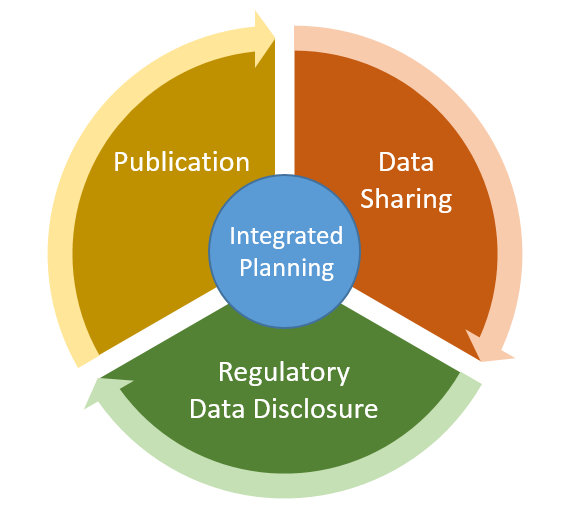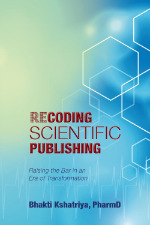Integrated Approach to Planning for Publication & Data Sharing
Published on September 26, 2016

In the move towards increased transparency, recent data sharing regulations as well as the imminent ICMJE data sharing requirements directly related to publications call for appropriate planning and coordination of several activities and efforts – publication, clinical trial disclosure per regulatory obligations, and journal requirements for publicly sharing study protocol and patient level data.
Journal requirements: Most of us are probably aware of the ICMJE proposal (announced earlier this year) requiring authors to share patient level data related to what is being reported in the publication, as a condition to be able to publish in their member journals. Since then the editors of the New England Journal of Medicine (NEJM) have kept us abreast of the progress and response from medical research community on the proposal through publication of series of editorials (each set includes 4 editorials – links provided below):
- June 23, 2016
- August 4, 2016
- September 22, 2016 together with an editorial from the Journal editors, which shares further progress and insights into current thinking of ICMJE on implementation of data sharing requirements
In general, there seems to be an overall agreement that data sharing is “the right thing to do”; the focus of discussion is now on “how to implement”. Apart from this, a number of journals also require submission of study protocol along with manuscript, which is published on the journal’s website along with published paper, once the paper is accepted.
Regulatory requirements: In 2014, the European Medicines Agency (EMA) released its policy (sometimes referred to as EU Policy 70) on publication of clinical trial data for medicines “once the decision-making process on an application for a European Union (EU)-wide marketing authorization is complete”, regardless of whether the drug receives EU regulatory approval. More information can be found on EMA website. The first step in the implementation of this policy is publication of redacted clinical study reports (CSR) and protocols that are part of the application submitted to EMA; followed by other documents and components of data sharing including de-identified patient level data. What this means is that - with the availability of redacted CSRs in the public domain, readers will be able to make comparison of the results reported in the CSR to what is reported in journal publications. Hence, it’s important for publication professionals to work closely with their regulatory colleagues and be aware of the analyses and data reported in CSR versus what is being reported in publications. Publication of ad-hoc and exploratory analyses that are not part of the CSR need to be clearly indicated as such to alleviate concerns related to perceived or actual discrepancy. In addition, sharing of redacted protocol as part of journal requirements would need to be consistent with what is planned to be submitted as part of EMA requirements. This month, the US Department of Health & Human Services (DHHS) also finalized the ruling related to clinical trial registration and disclosure on www.clinicaltrials.gov, that will enable the FDA to enforce financial penalties for non-compliance or delays in posting.
Although there remains confusion due to different requirements from journals and regulatory authorities, the general direction in which we are going is increased transparency. Many companies have already implemented data sharing programs for company-sponsored trials, such as the www.clinicalstudydatarequest.com. In order to prepare for the increasing regulatory and journal obligations, biopharmaceutical companies can optimize the implementation through an integrated approach to planning for publication & data sharing:
- Close collaboration between publication teams, regulatory, and data disclosure teams is necessary in order to have seamless, integrated and coordinated planning and efforts to fulfill the company’s publication, regulatory data disclosure and data sharing commitments.
- Planning & execution: Optimal approach to planning will not only need to consider strategic elements, but also to ensure an integrated plan that takes into account timing of journal publication, as well as EMA publication of redacted CSRs and other documents, and journal’s protocol and data sharing requirements. Communication between all 3 functions needs to be bilateral to ensure each stakeholder is well informed and aware of the progress and status. Publication teams should also be aware of what type of secondary analyses are being planned by external researchers who receive access to data (as part of data sharing initiative), in order to inform study investigators, and be prepared for publications that may arise from similar data analyses that may have been either published already or ongoing/planned by the study investigators for future publication.
In summary, an integrated approach to planning and execution of publication and data sharing efforts can help companies and organizations fulfill their commitments and obligations successfully.
© 2016-2024 Publication Practice Counsel; Truposha, LLC



